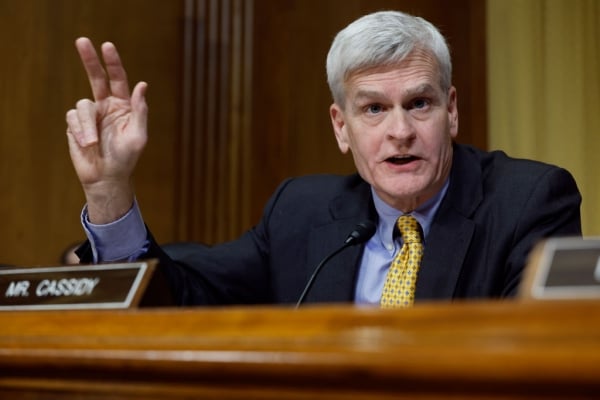Two women raced across an Ohio soccer pitch, too fast for their opponents to catch.
Mallory Pugh of Highlands Ranch whipped a pass toward the other team’s goal, then Windsor’s Sophia Smith tapped it in for the score. It was the second goal the two members of the U.S. Women’s National Soccer Team connected on during that April 9 game.
The final score: United States 9, Uzbekistan 1. It also was Colorado 5, Uzbekistan 1. Pugh, Smith and Jaelin Howell, also from Windsor, all scored.
That day, that game, that win were the result of 50 years of investment in women’s sports in Colorado, thanks in large part to Title IX. The federal act signed into law June 23, 1972, by President Richard Nixon brought equality to women in all aspects of education, including athletics.
“No person in the United States shall, on the basis of sex, be excluded from participation in, be denied the benefits of, or be subjected to discrimination under any education program or activity receiving Federal financial assistance,” the law reads.
The Colorado soccer players earn their living playing the game — something unimaginable for women in 1972. Not only that, but the U.S. Soccer Federation announced in May that its female players will earn the same as men.
“It’s created an opportunity for women to know that they can excel in academics and athletics and they can go to college for both and that they can eventually make a career out of it,” Smith, 22, said of Title IX. “I’m young and I don’t know a life different than this. But I know that it hasn’t always been easy and that women haven’t always been able to compete in sports and compete at a high level. I realize how fortunate I am to have grown up being able to have dreams like that.”
As Title IX turns 50, The Denver Post in a three-day series examines the legacy of Colorado’s most storied female athletes and how a state with a progressive attitude toward women’s athletics allowed them to succeed in their chosen sport. Yet inequities remain as no major female professional sports team calls the state home.
While sports often are front and center, Title IX has brought so much more to women, paving their way into the country’s most prestigious law schools, engineering programs and other academic fields that were long dominated by men. In recent years it’s become a legal tool women use to call out gender discrimination and sexual harassment and violence on campuses.
In collegiate sports, the world is changing. Fast.
Athletes can be paid for commercials, sell autographs or earn money for being social media stars, and some big-time football programs are talking about breaking away from the NCAA. This series also will look at how Title IX will be tested as athletic directors, coaches and athletes figure out how to comply with the law in a new paradigm.
“Title IX is the 37 words that changed the world,” said Cari S. Simon, managing legal counsel with The Fierberg National Law Group in Boulder. “It gave women equal access to education and all its benefits from sports to an education free of sexual violence to getting into the classroom door. It’s basic equity. Education is this equalizer and this path toward fulfilling one’s potential.”
“The 37 words say nothing about sports,” Simon added. “They just say it’s about equal access to education based on sex.”
Yet sports became an early focus of the new law and how it would be interpreted. Men’s athletic programs — specifically football — immediately began worrying about losing revenue to women’s sports after the bill’s passage.
By the time Title IX became law, however, Colorado already was pushing for official high school girls sports.

Colorado’s athletic legacy
Women in Colorado have always been athletically inclined — think hiking and skiing. In the 1920s, 93 of the Colorado Mountain Club’s 229 members were women, according to History Colorado.
Women formed a basketball league in Breckenridge in 1892, just one year after James Naismith invented the game for a Massachusetts YMCA. Local papers reported standing room-only audiences to watch the women run the court in their long, Victorian dresses.
One hundred and thirty years later, Stanford University forward and Regis Jesuit graduate Fran Belibi dunked in a women’s NCAA basketball tournament game on national television.
But let’s not get ahead of the story.
Three years before Title IX was written into law, the Colorado High School Activities Association hired Sharon Wilch, a Jefferson County physical education teacher, to help it create an official girls sports program.
Wilch was the only woman on the CHSAA staff at the time, but there were plenty of people ready to make girls high school sports official.
“Colorado was progressive,” Wilch said. “There were strong women in the state. Those women would push me to move faster and create more team sports.”
Before CHSAA sanctioned girls sports, there was the Girls Athletics Association — a school-based organization formed around the turn of the 20th century that provided physical activity for girls and women. The GAA coaches, often physical education instructors, organized play days for their girls to compete. Wilch, for example, would call a colleague and they’d reserve a few hours of gym time for their girls.
“So we’d drive up to Greeley and play the teams that were there and come home,” she said. “We didn’t even know who might be there that day. The girls just wanted to play. They were interested in competing. We didn’t even have any officials. The coaches just did it.”
When CHSAA first considered sanctioning girls sports, Wilch said, only one other state had done so — Illinois. Wilch became just the second woman to serve as administrator of a state high school sports association when she was hired at CHSAA in 1969, according to the National Federation of State High School Associations.
Coaches and administrators wanted to start with individual sports — ones they were familiar with from watching the Olympics. This was before women’s basketball and volleyball had been introduced in the Summer Games.
“There were stigmas connected to team sports,” Wilch, now 85, said. “A lot of it had to do with a little bit of fear of what the athletic directors would have to deal with. They had not worked with teams of girls.”

In 1970, CHSAA approved gymnastics as the first sanctioned high school girls sport. Track and field and tennis soon followed. Just over 11,000 girls played high school sports in Colorado in the 1973-1974 school year, representing 17% of all high school athletic participation, according to CHSAA data.
Today, there are 16 sports approved for girls to participate in under CHSAA’s oversight — the same number offered to boys. More than 61,000 participated in girls sports across the fall, winter and spring seasons, according to CHSAA data from the 2018-2019 school year, the most recent year with numbers not skewed by the pandemic.
Girls now represent nearly 45% of all high school athletic participation in Colorado.
Of the more than 75,000 registered participants in boys high school athletics in 2018-2019, 14,567 played football, the sport frequently credited with being the most popular in the United States and the one that generates the most revenue for schools.
At the college level, some universities have sacrificed men’s sports to balance the athletic opportunities available for men and women. Football teams carry large rosters, meaning universities have to find ways to offer the same number of athletic scholarships to women. At the University of Colorado Boulder, that meant eliminating the baseball team after the 1980 season.
Still, more men play college sports than women, according to the Women’s Sports Foundation. In the 2020-2021 academic year, women represented 44% of all college athletes with 215,486 on a college team. Before Title IX, 29,977 women played college sports, representing just 15% of all college athletes, the foundation’s data shows.
Wanting their daughters to play
When it came to convincing school boards, principals, athletic directors and coaches into accepting girls sports, progress was hit or miss. Some communities jumped on it. Others dragged their feet.
In Jefferson County, Alice “Cookie” Barron, a women’s basketball legend who worked in Jeffco Public Schools administration in the 1970s, already had started a girls sports league before Title IX came into being.
“No one ever told me I couldn’t,” she said.

When members of the Jefferson County Board of Education started reading about Title IX, they asked Barron and Tom Hancock, a Lakewood football coach, to write a report on what girls lacked when it came to sports in the county’s junior and senior high schools. The board listened to the report, then presented a bond referendum to voters to pay for expanded facilities in every junior and senior high school so girls had locker rooms, training rooms, equipment and other facilities.
It passed.
Few people vocally opposed girls’ equity in Jeffco sports, Barron said. But some resisted in subtle ways.
One example: Athletic directors would conduct searches to find the best candidates for coaching openings for boys programs while filling positions for girls teams with volunteers regardless of relevant experience, she said.
“But we also controlled their budgets so that we knew exactly how much we were giving them for boys and how much for girls,” Barron said. “They couldn’t flip-flop it and not give the girls that money.”
Barron remembers some resistance when she was pushing Jefferson County to offer more girls sports. One boys basketball coach told her and a male sports administrator that if the girls used his gym he might quit.
“God bless the guy I worked with,” Baron recalled of the conversation. “He said, ‘You just said two things wrong. One, that’s not your gym. And two you may have to quit.’”
The basketball coach quit.
On the academic side, the Colorado Department of Education hired Sue Schafer to implement Title IX. Schafer, who had a doctorate in education, already was working on civil rights issues at the department, but in 1980 she became the state’s Title IX director. Years earlier, she went to Washington, D.C., to lobby Congress to pass it.
Schafer traveled across the state to explain to school administrators why and how to comply with Title IX. She was met with some pushback. Often it came from athletic directors and coaches who worried girls sports would take money from the boys. But she also heard complaints from boys’ parents.
“A lot of parents said Title IX is going to ruin our boys’ egos,” Schafer said. “What’s going to happen to their egos? Oh, come on! A lot of our boys are going to be going into the workplace where they are competing for jobs with women. It’s about skills, not gender.”

Schafer, who later became a Colorado state representative, was an advocate because she grew up playing tennis in Nebraska, where her high school did not have any girls sports. When she asked the principal to let her play on the boys team, he refused.
“He said, ‘Oh no that’s not possible. It would be illegal to have a girl on a boys team,’” Schafer said. “I was so angry. He said it was too strenuous and girls were too weak. He actually said something like, ‘Your uterus might fall out.’”
Polyester jerseys and Chuck Taylors
Laura Fischer graduated from high school in southern Illinois in 1973 and enrolled at the University of Denver. She never played on a high school team because they didn’t exist at the time, but she met a woman in a class at DU who said she was going to basketball practice. Fischer found the coach after class and asked if she could join the club team. The coach told her when to show up for practice.
“I didn’t have any tennis shoes. The coach was wearing Tretorns. I went and bought a pair of those. I didn’t know what else to buy,” Fischer said.
At the time, basketball was a club sport. In the spring of 1974, DU officially introduced field hockey, skiing, gymnastics and tennis as women’s sports. Basketball debuted in the fall, Fischer said. She would letter in basketball and field hockey as a college athlete after never playing on a high school sports team.
“That would be unheard of today,” she said.

When Fischer graduated in 1977, she accepted a job as a PE teacher in Walsh, in the southeastern corner of Colorado. She also coached multiple sports, including girls junior and senior high school basketball.
“They wanted me to coach during my PE time and that meant everyone in the PE class had to be on the team,” she said. “I didn’t have an equal budget. We didn’t have equal facilities.”
Fischer earned $475 a year to coach girls basketball; the boys coach was paid $725, she said. And he had assistants.
She once got in trouble for asking junior high girls to come to a Saturday practice. And she was told the girls would not be allowed to practice in the gym after the boys.
“I was told no, that’s when the girls are doing their chores or helping with dinner,” she said.
Fischer, who is now president of the board of directors for Sportswomen of Colorado, sued the school district and won equal gym time, equipment and pay. She left Walsh and went on to coach girls and women’s basketball around the Front Range, including at Regis University.
Shortly after Title IX became law, Terri Ward‘s father joined other parents at St. Vrain Valley School District board meetings to push for girls sports. The girls who wanted to play attended, too. Sometimes, the meetings got heated with parents threatening to vote out school board members, Ward said.
“They went to the school board and said our daughters need to be able to do what our sons do,” she said.

Even after the girls teams started they weren’t treated the same. Ward remembers convincing a female math teacher, who knew nothing about basketball, and a male media technology teacher to coach girls basketball.
“We wore a T-shirt with a number ironed on and a pair of shorts,” she said. “At that point, we were just so happy to play I don’t really remember complaining about it.”
By her junior year, Ward’s school bought green-and-white, collared polyester jerseys and shorts for the girls. She wore Kelly green Converse Chuck Taylor All Stars.
For many women, sports opened the doors to a college education that otherwise would have been inaccessible.

No one in Doshia Woods’ family had stepped foot on a college campus when she was growing up in Topeka, Kansas.
Her mother was a single parent raising three children, and Woods sometimes lived with other families while growing up because her mother struggled financially. But Woods excelled at basketball and found sanctuary on the courts.
“The constant for me was my high school coach who took me in,” Woods said. “I remember thinking if I could have that type of impact on kids, not just as a player but as a person, I wanted to be able to do that.”
The local college, Washburn University, hosted a summer basketball camp, and there Woods met its women’s basketball team. The team later welcomed her into their locker room — allowing her to participate in warm-ups and ride along on road trips.
“That was my first introduction to strong women playing basketball,” she said. “I learned I could go to college for the sport.”
Woods received a scholarship, played basketball and graduated from Western Illinois in 2001. Today, she’s living her dream as head coach of the DU women’s basketball team, where she hopes to lead young women into adulthood just like her former coaches.
“If I couldn’t have played basketball in college, I wasn’t going,” she said. “I don’t know what I would be doing.”

Taking it to the mat
Rhonda Blanford-Green was one of Colorado’s homegrown champions, excelling in track and field at Aurora Central High School. By the time she graduated in 1981, Blanford-Green held state records in the sprints, hurdles and long jump.
After her collegiate run as an 18-time All-American at Nebraska, Blanford-Green went on to make a career out of sports administration, stepping down earlier this month after serving as CHSAA’s first female and first minority commissioner.
During her tenure, Blanford-Green oversaw the start of girls wrestling as a CHSAA-sanctioned sport in 2021. When Title IX came into being, colleges offered rowing and equestrian as women’s sports. But those require money or living in certain geographic areas to be accessible, she said.
With wrestling, anyone can do it, anywhere and anytime.
“What girls wrestling has done is open the door for inclusivity and diversity in sport,” she said. “The opportunity is out there. It doesn’t take high-end equipment to participate. This is the most inclusive girls sport that has been introduced in a long time.”
Pomona High School’s Persaeus Gomez, 16, is a rising star in girls wrestling. She went undefeated this past school year, winning the state title in the 118-pound weight class. Later this month, Gomez will travel to Argentina to wrestle in the U-17 Pan American Games for Team USA.

If all goes as planned, Gomez will become the first person in her immediate family to go to college. She hopes a wrestling scholarship opens that door.
Her path to success hasn’t been easy — especially in a male-dominated sport.
“There were people who would say something like, ‘What are you doing? You should do a more girl-like sport.’ It did hurt my feelings a little bit,” she said. “But once I got older I realized I was in a sport that opened so many opportunities and there’s more opportunities to come.”
Now, Gomez relishes being strong and serving as a role model to other girls, especially Hispanic ones.
“No hate or shame to other sports, but it’s unique for a girl to be in such a male-dominated sport and in such an aggressive sport,” she said. “It shows how tough girls can be.”
Room to grow
Even though Colorado has produced highly successful female athletes — and is developing even more — there’s still room for improvement when it comes to equality.
Earlier this year, just before tipoff of a basketball game against Regis University, the Metropolitan State University of Denver women’s basketball team crammed into their locker room.
“Speaking of Title IX…” a player joked as her teammates laughed. The player was referring to the size of their locker room, which is half that of their male counterparts.
They sat shoulder-to-shoulder as Coach Tanya Haave — who is paid more than the Metro men’s coach — gave her pre-game pep talk. Haave also is a local sports legend, having excelled in volleyball and basketball at Evergreen High School and later playing for Pat Summitt at the University of Tennessee.

The fact that Metro’s women’s coach is paid more than the men’s coach but their team locker room is not much bigger than a walk-in closet shows how Title IX has pushed women’s sports toward equality while still leaving room for more growth.
There are still no major professional women’s sports leagues in Colorado and no apparent organized effort to bring a WNBA or NWSL franchise here. Women athletes’ pay lags that of men in almost all sports. Meanwhile, the NCAA is navigating a changing landscape where student athletes can make money by selling their name, image and likeness. No one is sure how that’s going to play out under Title IX.
The U.S. Women’s National Soccer Team is a notable exception when it comes to compensation. Just last month the women won a hard-fought battle for equal pay with the U.S. Soccer Federation. That means women on the national team will earn the same money for competitions and the same World Cup performance incentives as the men’s players.

What’s in the water?
At the Real Colorado headquarters in Centennial, Lorne Donaldson’s desk is piled with graduation cards from his former players. Many feature pictures of teenagers in soccer uniforms with announcements of where they plan to play in college. The shelves are filled with shiny gold trophies and boxes of jerseys are stacked on the floor.
Without Title IX, none of it would exist, said Donaldson, the soccer club’s president and executive director of coaching.
“Title IX was one of the most important things that ever happened in this country,” he said.
It’s the reason the American women have been so successful on the international soccer stage, he said. They’ve grown up playing the game, knowing the sport could carry them to college. If they never play professionally, that college degree and the life skills they learn through sports would make them successful adults, he said.
Donaldson this summer will coach the Jamaican women’s national team in World Cup qualifying tournaments. The Jamaican players always look up to the American women, who are never shy about speaking out on women’s rights.
“It’s because they’ve been through Title IX,” he said.
While Real Colorado is a co-ed organization and also has men playing at the national level, it’s the women who are making a name for the club. No other club in the country has three women on the national team right now.
Smith, the player who scored three goals in that April match in Columbus, and Howell, the rookie who scored her first international goal, met in kindergarten. They grew up together, dreaming of one day becoming members of the U.S. team and earning a living through soccer. They watched Lindsey Horan and Mallory Pugh, who also played at Real, chart a path ahead of them.

“We pushed each other,” Howell said. “Having someone as good as Soph next to me pushed me every day. I’m grateful.”
Smith said other soccer players ask, “‘What’s in the water in Colorado?”
It’s a combination of things, she and Howell said: an investment in female athletes, the high-altitude training, supportive parents and coaches.
“It’s the environment we grew up playing in,” Smith said.
Colorado champions
Colorado over the years has produced champion women athletes in a variety of sports:
- Amy Van Dyken: Six-time Olympic gold medalist in swimming
- Mikaela Shiffrin: World champion skier with 6 gold medals, 2 silvers, 3 bronzes and multiple world cup titles
- Missy Franklin: Five gold medals in Olympic swimming
- Adeline Gray: Six-time world champion and Olympic silver medalist in women’s wrestling
- Lindsay Horan: First female soccer player to skip college and turn pro; U.S. Women’s National Team World Cup champion and Olympic gold medal winner
- Michaela Onyenwere: WNBA first-round draft pick for the New York Liberty and the 2021 WNBA Rookie of the Year
- Becky Hammon: Colorado State University basketball star and head coach of the WNBA’s Las Vegas Aces
- Jayne Gibson-McHugh: 1988 U.S. Olympic women’s volleyball team member

























Discussion about this post